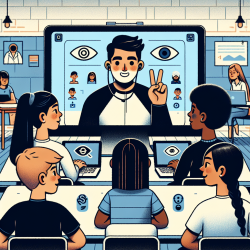In recent years, the increasing rates of psychotropic drug prescriptions for children and adolescents have sparked debates on their effectiveness in improving behavioral outcomes. A study titled "Increased Prescribing of Psychotropic Drugs or School-Based Services for Children with Disabilities? Associations of These Self-control-Boosting Strategies with Juvenile Violence at the State Level" offers significant insights into this issue. This research compares the impact of psychotropic medications and school-based services on juvenile violence, revealing crucial findings for practitioners in the field of speech language pathology.
The study utilized state-level data from 1990 to 2014, focusing on the effects of psychotropic drug prescriptions and school-based services on juvenile violence rates. Mixed-effects linear regression analyses were employed to account for various time trends and control for relevant covariates. The findings are compelling:
- Inconsistent Impact of Psychotropic Drugs: The research found that increased prescribing of psychotropic drugs to children showed inconsistent or insignificant effects on reducing juvenile violence. This suggests that while these medications may have benefits for individual cases, their broader impact on youth violence at the state level is limited.
- Significant Benefits of School-Based Services: In contrast, the study found a strong association between increased school-based services for children with learning disabilities and declines in all types of juvenile violence. This underscores the importance of robust school-based interventions in mitigating behavioral issues and promoting better outcomes for children with disabilities.
- Role of Child Poverty: Another critical finding was the link between reductions in child poverty and decreases in juvenile violence. This relationship was both contemporaneous and sustained over time, highlighting the need for holistic approaches that address socio-economic factors alongside educational and therapeutic interventions.
Practical Implications for Practitioners
For speech language pathologists and other practitioners, these findings emphasize the value of school-based services over reliance on psychotropic medications. Here are actionable steps to consider:
- Advocate for Comprehensive School-Based Services: Push for policies and funding that enhance school-based services for children with disabilities. These services should include speech and language therapy, occupational therapy, and psychological support, tailored to meet individual needs.
- Collaborate with Educators and Policymakers: Work closely with educators, school administrators, and policymakers to ensure that children with disabilities receive the necessary support. Highlight the data-driven benefits of these services in reducing juvenile violence and improving overall outcomes.
- Focus on Holistic Interventions: Incorporate strategies that address socio-economic factors affecting children’s development. Advocate for programs that support families in poverty, as this can have a profound impact on reducing behavioral issues and promoting long-term success.
Encouraging Further Research
While this study provides valuable insights, it also opens the door for further research. Practitioners are encouraged to:
- Investigate Individual-Level Data: Future studies should explore the individual-level impacts of psychotropic medications and school-based services, using more granular data to understand the nuances of these interventions.
- Examine Long-Term Outcomes: Research should also focus on the long-term effects of these interventions on children’s academic performance, social skills, and overall well-being.
- Explore Integrated Approaches: Investigate the effectiveness of integrated approaches that combine school-based services with other support systems, such as community programs and family interventions.
To read the original research paper, please follow this link: Increased Prescribing of Psychotropic Drugs or School-Based Services for Children with Disabilities? Associations of These Self-control-Boosting Strategies with Juvenile Violence at the State Level.










